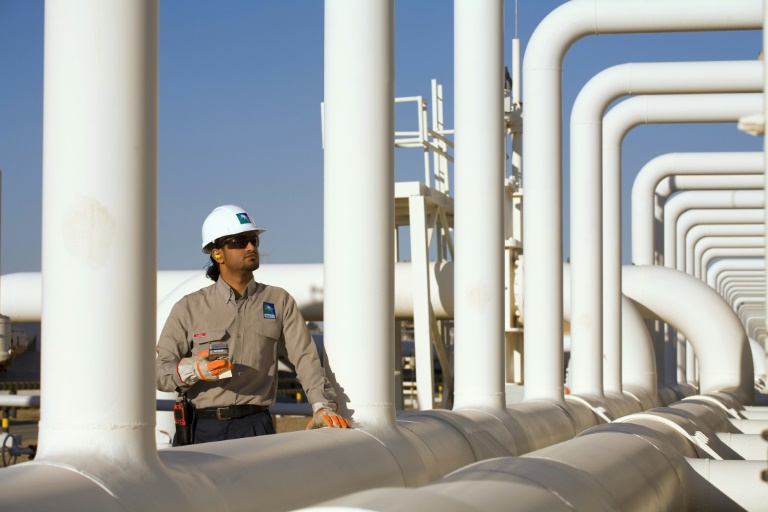Saudi Aramco reports 46% jump in profits for 2022

A handout picture provided by Energy giant Saudi Aramco, Saudi Arabia’s Oil Company, shows one of its engineers at Yanbu refinery on January 16, 2011
Riyadh – Saudi Aramco reported on Sunday that profits jumped 46 percent last year, highlighting how a surge in oil prices after Russia invaded Ukraine spurred growth in the world’s biggest crude exporter.
The mostly state-owned energy giant, the world’s second most valuable company behind Apple, said in a filing with the Saudi stock market that net income for 2022 was $161.07 billion, up from $110 billion in 2021.
The increase was “predominantly due to the impact of higher crude oil prices and volumes sold, and stronger refining margins,” it said.
Aramco’s results are consistent with record profits for 2022 reported by the five oil majors –- Shell, Chevron, ExxonMobil, BP and TotalEnergies — which surpassed $150 billion and would have been closer to $200 billion without costly withdrawals from Russia.
They also fuelled Saudi Arabia’s overall economic growth which officials put at 8.7 percent in 2022, the highest rate in the G20.
The net income figure is nearly double the $88.2 billion the firm pulled in 2019, before the coronavirus pandemic.
“Aramco rode the wave of high energy prices in 2022. It’s what the company is geared to do,” said Robert Mogielnicki, of the Arab Gulf States Institute in Washington. “It would have been difficult for Aramco not to perform strongly in 2022.”
Energy prices are expected to stay elevated in 2023, in part because of production cuts approved last October by the OPEC+ cartel that Riyadh co-leads with Moscow — a move harshly criticised by Washington.
Aramco’s facilities have in the past suffered drone and missile attacks claimed by Yemen’s Iran-backed Huthi rebels, most recently about a year ago, but a surprise deal announced on Friday between Riyadh and Tehran to restore diplomatic ties severed in 2016 could mitigate the risk in the months to come.
“I don’t envision another record year for Aramco in 2023, but it could still be a solid performance,” Mogielnicki said.
– Growth ‘driver’ –
Under Crown Prince Mohammed bin Salman, the de facto ruler, Saudi Arabia has sought both to open up and diversify its oil-reliant economy, spending heavily on much-hyped projects like a futuristic megacity known as NEOM.
Officials have touted growth in non-oil activities which increased 6.2 percent in the fourth quarter of 2022 over the same period in 2021, according to data published on Thursday by the national statistics authority.
Yet government spending “is a major driver for this growth” and that “will always be to some extent linked to oil revenue”, underscoring Aramco’s central role in the economy, said Justin Alexander, director of the consultancy Khalij Economics.
Saudi Arabia has pledged to achieve net zero carbon emissions by 2060, drawing scepticism from environmental campaigners.
Officials are simultaneously championing further investments in fossil fuels to ensure energy security and stave off inflation and other economic woes.
Aramco has pledged to achieve “operational net-zero” carbon emissions by 2050.
That applies to emissions that are produced directly by Aramco’s industrial sites, but not the CO2 produced when clients burn Saudi oil in their cars, power plants and furnaces.
Aramco floated 1.7 percent of its shares on the Saudi bourse in December 2019, generating $29.4 billion in the world’s biggest initial public offering.
